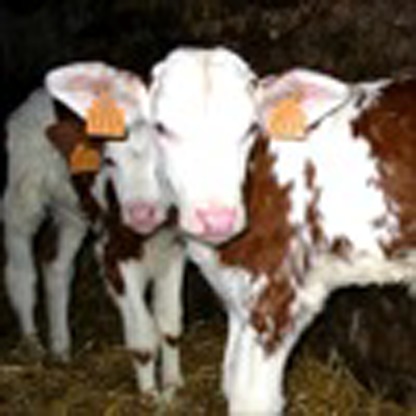- Record: found
- Abstract: found
- Article: found
C-Nap1 mutation affects centriole cohesion and is associated with a Seckel-like syndrome in cattle

Read this article at
Abstract
Caprine-like Generalized Hypoplasia Syndrome (SHGC) is an autosomal-recessive disorder in Montbéliarde cattle. Affected animals present a wide range of clinical features that include the following: delayed development with low birth weight, hind limb muscular hypoplasia, caprine-like thin head and partial coat depigmentation. Here we show that SHGC is caused by a truncating mutation in the CEP250 gene that encodes the centrosomal protein C-Nap1. This mutation results in centrosome splitting, which neither affects centriole ultrastructure and duplication in dividing cells nor centriole function in cilium assembly and mitotic spindle organization. Loss of C-Nap1-mediated centriole cohesion leads to an altered cell migration phenotype. This discovery extends the range of loci that constitute the spectrum of autosomal primary recessive microcephaly (MCPH) and Seckel-like syndromes.
Abstract
 SHGC syndrome affects cattle and has clinical features similar to human Seckel syndrome.
Here Floriot
et al. identify the causative mutation in the centrosomal protein C-Nap1 that affects centriole
cohesion and cell migration, extending the range of loci involved in human Seckel-like
syndromes.
SHGC syndrome affects cattle and has clinical features similar to human Seckel syndrome.
Here Floriot
et al. identify the causative mutation in the centrosomal protein C-Nap1 that affects centriole
cohesion and cell migration, extending the range of loci involved in human Seckel-like
syndromes.
Related collections
Most cited references35
- Record: found
- Abstract: found
- Article: not found
Centrioles, centrosomes, and cilia in health and disease.
- Record: found
- Abstract: found
- Article: not found
Small molecule inhibitor of mitotic spindle bipolarity identified in a phenotype-based screen.
- Record: found
- Abstract: found
- Article: not found